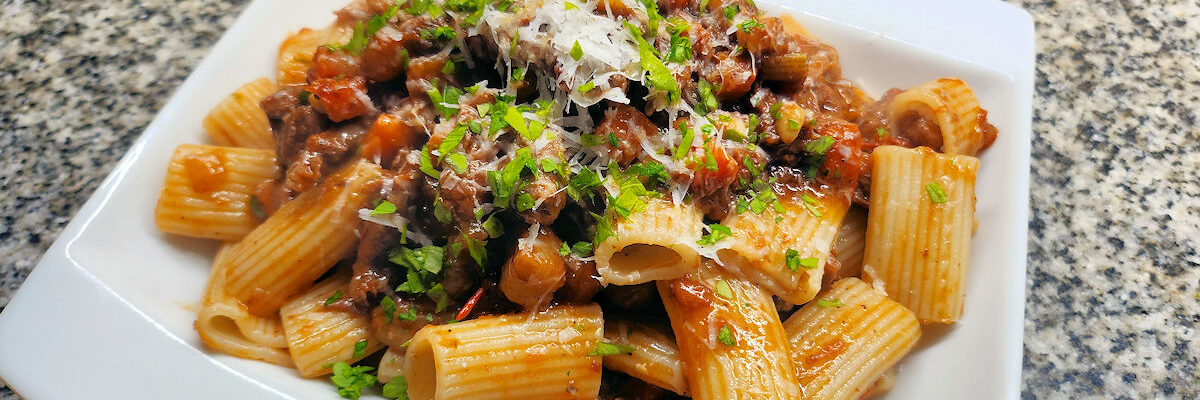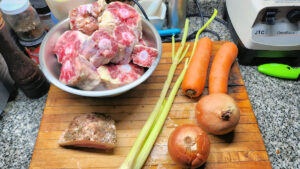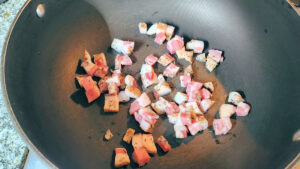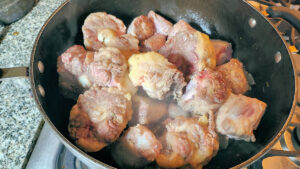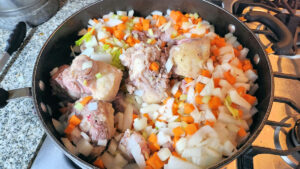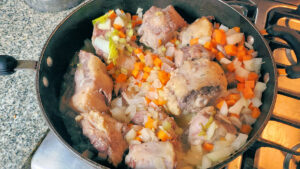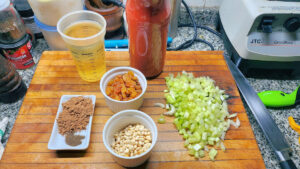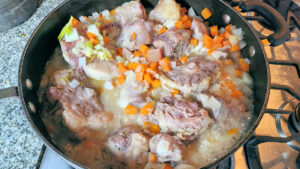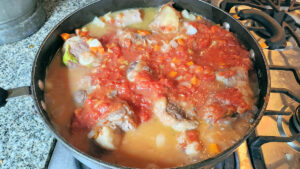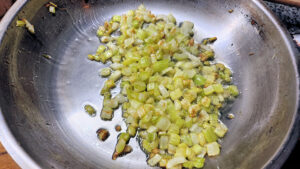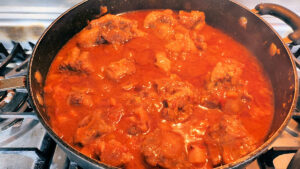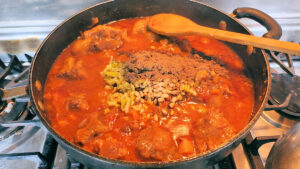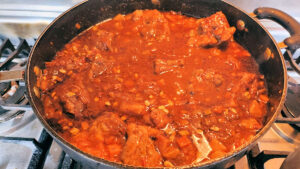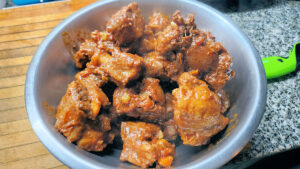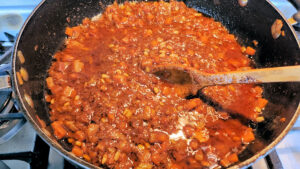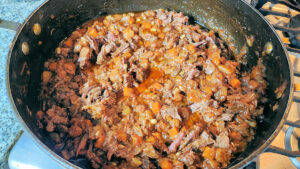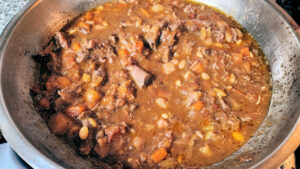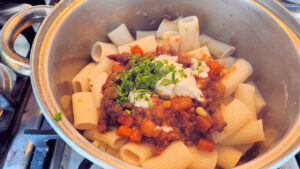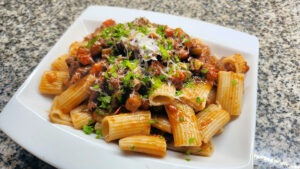We’re back in Lazio, in Rome, with another pasta. It came up as I was watching a video from someone purporting to know all about Italian pastas, as he asserted that the only pastas worth knowing from the area were the famed four “spaghettis” (gricia, cacio e pepe, amatriciana, carbonara), which he then detailed, getting the ingredients and chronology wrong. I didn’t bother watching his videos for other regions. But I’d noted before that there are so many traditional pastas in this part of Italy (and all the others as well) that those of us outside of the country rarely hear about, and less often, try. So, here’s another one!
Let us start here, with, oxtail. Yes, we’re making an oxtail, coda di bue, or coda alla vaccinara sauce for our pasta (respectively, those mean either simply oxtail, or oxtail stew). The base of it is, obviously, oxtail, cut in sections, some guanciale (pepper and herb cured pork cheek), celery, carrots, and onions. Note, once again, no garlic. It’s actually kind of interesting to me exploring these pasta sauces, as I’d never actually noted that a lot of Roman sauces simply don’t use it. I find myself curious now.
First, dice the guanciale and render it over low heat in a pan to give a nice coating of fat and start to brown the pieces.
Add the oxtail and brown it as well, this will add more fat to the pan. I should note, this ragú is not for folk who don’t eat fat. These two ingredients probably give you your weekly allowance in one serving.
When lightly browned, add the chopped vegetables, and cook, mixing them up, until softened.
Here are the rest of our ingredients. White wine, tomato passata, more celery, chopped, pinenuts, yellow raisins, unsweetened cocoa powder, and ground cloves. Salt and pepper of course, though I don’t add those into this dish until the end.
Deglaze with white wine and cook for 2-3 minutes to burn off some of that raw alcohol flavor. In truth, this ragú cooks for long enough that that probably makes little difference.
Add the passata and mix in. Cover, bring to a simmer, turn the heat down really low, and let it cook for two hours, occasionally mixing it up so the oxtail cooks evenly.
Fry the chopped celery in a little olive oil until lightly browned. Some people boil it, which to me, since it’s going into the sauce to cook for at least an hour, makes no sense. The frying at least gives it some different texture and flavor.
Your ragú should now look more or less like this. Add the remaining ingredients – the fried celery, pinenuts, raisins, cocoa, and cloves. Mix in, re-cover, and cook for another hour, again, mixing it up now and then.
And, it should cook down until a bit thicker and richer. Turn the flame off.
Remove the oxtails (it is worth, perhaps, knowing how many sections you put in the pot, so that you make sure you’ve retrieved all the bones. Let the oxtails cool enough that you can handle them, as you’re going to need to shred all the meat off the bones by hand. Of course, you’re going to include lots of the fat and collagen, the good stuff, you know?
Mix the shredded oxtail back into the sauce, it should look something like this. Store for later use, it can be refrigerated, frozen, or used straight away. I used a small amount of it for the rest of this post, the remainder was refrigerated overnight and used for a Casa SaltShaker dinner (though, with a different pasta than traditional, because I wasn’t going to hand-roll rigatoni for a dozen people, so I made maltagliati).
Heat up some of the sauce, get your rigatoni, the classic pasta shape for this sauce, into boiling salted water, and add a ladle or so of the starchy, salty pasta water to this to emulsify it – note how it brings together that separated fat into a more creamy looking ragú. Now is the time for salt and pepper to taste.
I tossed the rigatoni with some of the sauce, some grated pecorino that had been melted into a creamy mass with some of the pasta water, and some chopped parsley.
Then, served it up with the rest of the sauce atop, some more grated pecorino romano, and more parsley. And there you have it, Rigatoni al Sugo di Coda alla Vaccinara!
This sauce is so rich, so unctuous, that it’s not something I’d want to eat often, but as an occasional artery clogging treat, it is so delicious!
